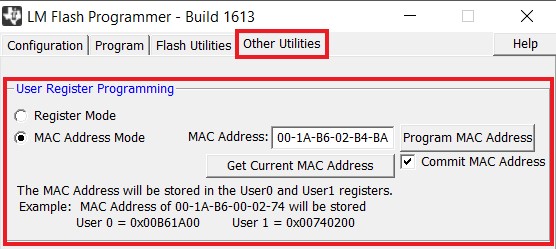SPMA080 April 2021 TM4C1292NCPDT , TM4C1292NCPDT , TM4C1292NCZAD , TM4C1292NCZAD , TM4C1294KCPDT , TM4C1294KCPDT , TM4C1294NCPDT , TM4C1294NCPDT , TM4C1294NCZAD , TM4C1294NCZAD , TM4C1299KCZAD , TM4C1299KCZAD , TM4C1299NCZAD , TM4C1299NCZAD , TM4C129DNCPDT , TM4C129DNCPDT , TM4C129DNCZAD , TM4C129DNCZAD , TM4C129EKCPDT , TM4C129EKCPDT , TM4C129ENCPDT , TM4C129ENCPDT , TM4C129ENCZAD , TM4C129ENCZAD , TM4C129LNCZAD , TM4C129LNCZAD , TM4C129XKCZAD , TM4C129XKCZAD , TM4C129XNCZAD , TM4C129XNCZAD
- Trademarks
- 1 Introduction
- 2 Application Examples
- 3 Application Setup
- 4 Download and Import the Ethernet Examples
- 5 How to Create an Ethernet Application for TI-RTOS NDK
- 6 Enet_tcpecho_server_tirtos Example Overview
- 7 Enet_udpecho_server_tirtos Example Overview
- 8 Enet_httpServer_tirtos Example Overview
- 9 Enet_dns_tirtos Example Overview
- 10Enet_sntp_tirtos Example Overview
- 11Enet_tcpecho_client_tirtos Example Overview
- 12Enet_udpecho_client_tirtos Example Overview
- 13Enet_httpget_tirtos Example Overview
- 14References
6.2.1 Using The LM Flash Programmer
This tool is most suitable if you are using the EK-TM4C1294XL LaunchPad. The LM Flash Programmer only supports the ICDI debug probe which is built-in on the LaunchPad. To check and program the MAC address follows the below steps.
- Open the LM Flash Programmer and go to the “Other Utilities” tab.
- Select the “MAC Address Mode” radio button.
- To read the MAC address, press the “Get Current MAC Address” button.
- To program the MAC address:
- first type the six-octet MAC address into the “MAC Address” field.
- Next, click the “Commit MAC Address” checkbox. This commit will permanently store the MAC address on the internal EEprom. If the commit is not checked, the MAC address just entered will be temporary until the next power cycle.
- Finally, press the “Program MAC Address” button to complete the programming.
 Figure 6-2 MAC Address Programming Using LM
Flash Programmer
Figure 6-2 MAC Address Programming Using LM
Flash Programmer